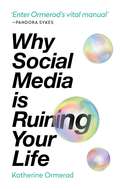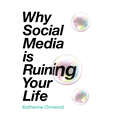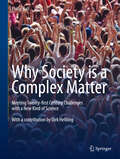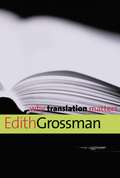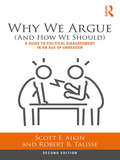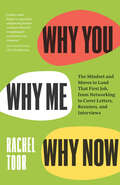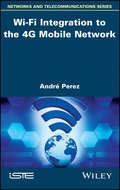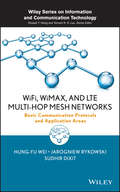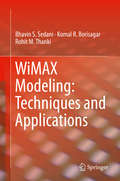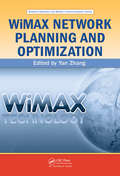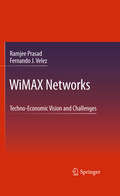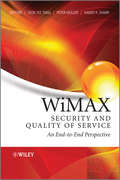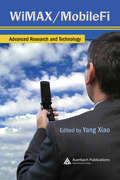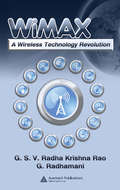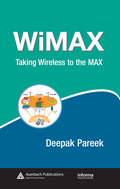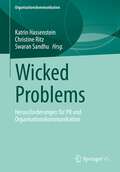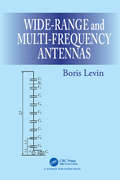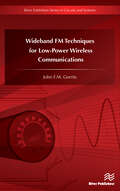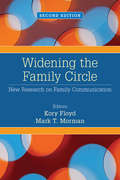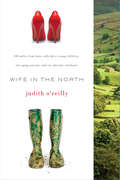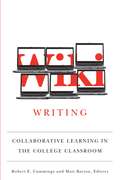- Table View
- List View
Why Social Media is Ruining Your Life
by Katherine Ormerod'This book is a call to arms from the eye of the storm'- Emma Gannon, author of The Multi-Hyphen Method'Enter Ormerod's vital manual, which will help you navigate social media and turn it not into a weapon, but a useful tool' - Pandora SykesDo you ever obsess about your body? Do you lie awake at night, fretting about the state of your career? Does everyone else's life seem better than yours? Does it feel as if you'll never be good enough? Why Social Media is Ruining Your Life tackles head on the pressure cooker of comparison and unreachable levels of perfection that social media has created in our modern world.In this book, Katherine Ormerod meets the experts involved in curating, building and combating the most addictive digital force humankind has ever created. From global influencers - who collectively have over 10 million followers - to clinical psychologists, plastic surgeons and professors, Katherine uncovers how our relationship with social media has rewired our behavioural patterns, destroyed our confidence and shattered our attention spans.Why Social Media is Ruining Your Life is a rallying cry that will provide you with the knowledge, tactics and weaponry you need to find a more healthy way to consume social media and reclaim your happiness.
Why Social Media is Ruining Your Life
by Katherine Ormerod'This book is a call to arms from the eye of the storm'- Emma Gannon, author of The Multi-Hyphen Method'Enter Ormerod's vital manual, which will help you navigate social media and turn it not into a weapon, but a useful tool' - Pandora SykesDo you ever obsess about your body? Do you lie awake at night, fretting about the state of your career? Does everyone else's life seem better than yours? Does it feel as if you'll never be good enough? Why Social Media is Ruining Your Life tackles head on the pressure cooker of comparison and unreachable levels of perfection that social media has created in our modern world.In this book, Katherine Ormerod meets the experts involved in curating, building and combating the most addictive digital force humankind has ever created. From global influencers - who collectively have over 10 million followers - to clinical psychologists, plastic surgeons and professors, Katherine uncovers how our relationship with social media has rewired our behavioural patterns, destroyed our confidence and shattered our attention spans.Why Social Media is Ruining Your Life is a rallying cry that will provide you with the knowledge, tactics and weaponry you need to find a more healthy way to consume social media and reclaim your happiness.(p) 2018 Octopus Publishing Group
Why Society is a Complex Matter
by Philip BallSociety is complicated. But this book argues that this does not place it beyond the reach of a science that can help to explain and perhaps even to predict social behaviour. As a system made up of many interacting agents - people, groups, institutions and governments, as well as physical and technological structures such as roads and computer networks - society can be regarded as a complex system. In recent years, scientists have made great progress in understanding how such complex systems operate, ranging from animal populations to earthquakes and weather. These systems show behaviours that cannot be predicted or intuited by focusing on the individual components, but which emerge spontaneously as a consequence of their interactions: they are said to be 'self-organized'. Attempts to direct or manage such emergent properties generally reveal that 'top-down' approaches, which try to dictate a particular outcome, are ineffectual, and that what is needed instead is a 'bottom-up' approach that aims to guide self-organization towards desirable states. This book shows how some of these ideas from the science of complexity can be applied to the study and management of social phenomena, including traffic flow, economic markets, opinion formation and the growth and structure of cities. Building on these successes, the book argues that the complex-systems view of the social sciences has now matured sufficiently for it to be possible, desirable and perhaps essential to attempt a grander objective: to integrate these efforts into a unified scheme for studying, understanding and ultimately predicting what happens in the world we have made. Such a scheme would require the mobilization and collaboration of many different research communities, and would allow society and its interactions with the physical environment to be explored through realistic models and large-scale data collection and analysis. It should enable us to find new and effective solutions to major global problems such as conflict, disease, financial instability, environmental despoliation and poverty, while avoiding unintended policy consequences. It could give us the foresight to anticipate and ameliorate crises, and to begin tackling some of the most intractable problems of the twenty-first century.
Why Study the Media?
by Professor Roger Silverstone"It's easy to be snobbish about media culture; the great merit of Roger Silverstone's book is to make the reader understand just how important that culture is." - Richard Sennett, New York University "A remarkable book which argues for a new paradigm for the study of the media." - Daniel Dayan, Centre National de la Recherche "A persuasive and sophisticated discussion of the role of the media in modern life at the threshold of the twenty-first century." - Ellen Seiter, University of California "A very important book, one that moves media theory and argument on at long last. This is an attempt to get people to think differently about the media - not just when they are writing essays, but also when they are arguing about media in everyday life." - Simon Frith, University of Stirling The centrality of the media, all media, to human experience - from the conduct of everyday life, to the exercise of power, to the creation of culture - is inescapable. We live in an intensely mediated world. Yet the academic study of the media has rarely made its own insights accessible and relevant to those outside its own limited sphere. Indeed it is constantly under attack for its lack of rigour, apparent failure to address the needs of industry and its inability to tell us anything substantive about the world in which we live. Written as a manifesto and in order to set a new intellectual agenda, Why Study the Media? argues for the importance of the media in our culture and society and the consequent necessity of taking the media seriously as an object of enlightened but rigorous investigation. At once human and humane, Why Study the Media? will be welcomed by all those in search of new ways of thinking about our mediated world.
Why Translation Matters
by Edith GrossmanWhy Translation Matters argues for the cultural importance of translation and for a more encompassing and nuanced appreciation of the translator's role. As the acclaimed translator Edith Grossman writes in her introduction, "My intention is to stimulate a new consideration of an area of literature that is too often ignored, misunderstood, or misrepresented." For Grossman, translation has a transcendent importance: "Translation not only plays its important traditional role as the means that allows us access to literature originally written in one of the countless languages we cannot read, but it also represents a concrete literary presence with the crucial capacity to ease and make more meaningful our relationships to those with whom we may not have had a connection before. Translation always helps us to know, to see from a different angle, to attribute new value to what once may have been unfamiliar. As nations and as individuals, we have a critical need for that kind of understanding and insight. The alternative is unthinkable." Throughout the four chapters of this bracing volume, Grossman's belief in the crucial significance of the translator's work, as well as her rare ability to explain the intellectual sphere that she inhabits as interpreter of the original text, inspires and provokes the reader to engage with translation in an entirely new way.
Why We Argue (And How We Should): A Guide to Political Disagreement in an Age of Unreason (Second Edition)
by Robert B. Talisse Scott F. Aikin<p><i>Why We Argue (And How We Should): A Guide to Political Disagreement in an Age of Unreason</i> presents an accessible and engaging introduction to the theory of argument, with special emphasis on the way argument works in public political debate. The authors develop a view according to which proper argument is necessary for one’s individual cognitive health; this insight is then expanded to the collective health of one’s society. Proper argumentation, then, is seen to play a central role in a well-functioning democracy. <p>Written in a lively style and filled with examples drawn from the real world of contemporary politics, and questions following each chapter to encourage discussion, <i>Why We Argue (And How We Should)</i> reads like a guide for the participation in, and maintenance of, modern democracy. An excellent student resource for courses in critical thinking, political philosophy, and related fields, <i>Why We Argue (And How We Should)</i> is an important contribution to reasoned debate.</p>
Why We Elect Narcissists and Sociopaths—And How We Can Stop!: Understanding, Spotting, And Defeating High-conflict Politicians
by Bill EddyBestselling author, therapist, lawyer, and mediator Bill Eddy describes how dangerous, high-conflict personalities have gained power in governments worldwide—and what citizens can do to keep these people out of office. Democracy is under siege. The reason isn't politics but personalities: too many countries have come under the sway of high-conflict people (HCPs) who have become politicians. Most of these high-conflict politicians have traits of narcissistic personality disorder, antisocial (i.e., sociopathic) personality disorder, or both. This is the first and only guide for identifying and thwarting them. HCPs don't avoid conflict, they thrive on it, widening social divisions and exacerbating international tensions. Eddy, the world's leading authority on high-conflict personalities, explains why they're so seductive and describes the telltale traits that define HCPs—he even includes a helpful list of forty typical HCP behaviors.Drawing on historical examples from Hitler, Stalin, Mao, and Nixon to Trump, Maduro, and Putin, Eddy shows how HCPs invent enemies and manufacture phony crises so they can portray themselves as the sole heroic figure who can deal with them, despite their inability to actually solve problems. He describes the best ways to expose HCPs as the charlatans they are, reply to their empty and misleading promises, and find genuine leaders to support. Eddy brings his deep psychotherapeutic experience to bear on a previously unidentified phenomena that presents a real threat to the world.
Why You, Why Me, Why Now: The Mindset and Moves to Land That First Job, from Networking to Cover Letters, Resumes, and Interviews
by Rachel ToorA clear, accessible, and fun guide on everything it takes to land a job. Searching for a job can be hard and demoralizing work. In Why You, Why Me, Why Now, Rachel Toor delivers some good news. The most important thing is within your control—a mindset that shows you know the goals of the organization you want to work for and that you’re ready and eager to contribute. Toor provides, with compassion and enthusiasm, strategies to make it easy for hiring managers to say “yes.” Through useful and funny anecdotes, she offers advice from professionals across industries and focuses on the attitude applicants can adopt to find success. Revealing traits employers seek, Toor shows how to craft winning cover letters, ways to tailor resumes for each job, and practical tips to get past AI screening. She also explains how to use LinkedIn and gives tips on preparing for interviews. Throughout, the book features Toor’s notes on writing well to help in landing a first job and beyond. Encouraging, entertaining, and blunt, this is a job-search guide like no other.
Wi-Fi Integration to the 4G Mobile Network
by Andre PerezThe adoption of smartphones has had as a corollary the use of services that require streaming, such as video streaming, which is a constraint for the 4G mobile network. The integration of the network of Wi-Fi hotspots deployed by the operators adds capacity to the 4G mobile network.The use of Wi-Fi technology in carrier networks is the result of developments coordinated by the IEEE, WFA and WBA standardization bodies. For its part, the 3GPP standardization body has been working to integrate Wi-Fi technology into the 4G mobile network.The first part of this book presents the characteristics of the Wi-Fi radio interface. The different IEEE 802.11b / g / n / ac physical layers characterize the implementation in the 2.4 GHz ISM frequency bands and U- NII at 5 GHz. The MAC layer defines a number of media access procedures such as scanning, associating, or transferring data.The second part of this book deals with the architecture of the 4G network based on the Wi-Fi interface. This architecture defines several models corresponding, on the one hand, to Wi-Fi access controlled or not, On the other hand, to a handover controlled by the network or by the mobile. The integration of Wi-Fi technology resulted in a redefinition of attachment and session set-up procedures.Smartphones have the ability to activate simultaneously the two radio interfaces, LTE and Wi-Fi, which allows to direct certain services to one and / or the other of the interfaces. The ANDSF and HotSpot 2.0 functions provide the mobile with rules for network selection and traffic control to determine which traffic is to be routed to what type of interface.
WiFi, WiMAX and LTE Multi-hop Mesh Networks
by Hung-Yu Wei Sudhir Dixit Jarogniew RykowskiWifi, WiMAX, and Cellular Multihop Networks presents an overview of WiFi-based and WiMAX-based multihop relay networks. As the first text to cover IEEE 802.16j multihop hop relay technology, this revolutionary resource explores the latest advances in multi-hop and ad-hoc networking. Not only does this reference provide the technological aspects, but also the applications for the emerging technology and architectural issues. Ranging from introductory material to advanced topics, this guidebook, plus PowerPoint slides, is essential for engineers, researchers, and students interested in learning more about WiFi and WiMAX multihop relay networks.
WiMAX Modeling: Techniques and Applications
by Rohit M. Thanki Komal R. Borisagar Bhavin S. SedaniThis book provides information about wireless systems and WIMAX modeling. The authors provide various techniques for the WiMAX systems such as antenna diversity and Alamouti coding. The performance of these systems is tested using various types of data and the results of systems are presented and discussed. Additional topics include WiMAX simulation using diversity techniques and real time WiMAX system modeling. The book pertains to researchers, academics, students, and professionals.Provides information about wireless system modeling and WiMAX systems;Presents WiMAX system modeling using antenna diversity techniques and the Alamouti coding scheme;Includes real time WiMAX system modeling for speech signal and digital images.
WiMAX Network Planning and Optimization (Wireless Networks and Mobile Communications)
by Yan ZhangThis book offers a comprehensive explanation on how to dimension, plan, and optimize WiMAX networks. The first part of the text introduces WiMAX networks architecture, physical layer, standard, protocols, security mechanisms, and highly related radio access technologies. It covers system framework, topology, capacity, mobility management, handoff m
WiMAX Networks
by Ramjee Prasad Fernando J. VelezIgnited by the mobile phone's huge success at the end of last century, the demand for wireless services is constantly growing. To face this demand, wireless systems have been and are deployed at a large scale. These include mobility-oriented technologies such as GPRS, CDMA or UMTS, and Local Area Network-oriented technologies such as WiFi. WiMAX Networks covers aspects of WiMAX quality of service (QoS), security, mobility, radio resource management, multiple input multiple output antenna, planning, cost/revenue optimization, physical layer, medium access control (MAC) layer, network layer, and so on.
WiMAX Security and Quality of Service
by Peter Muller Hamid Sharif Seok-Yee TangWiMAX is the first standard technology to deliver true broadband mobility at speeds that enable powerful multimedia applications such as Voice over Internet Protocol (VoIP), online gaming, mobile TV, and personalized infotainment. WiMAX Security and Quality of Service, focuses on the interdisciplinary subject of advanced Security and Quality of Service (QoS) in WiMAX wireless telecommunication systems including its models, standards, implementations, and applications. Split into 4 parts, Part A of the book is an end-to-end overview of the WiMAX architecture, protocol, and system requirements. Security is an essential element in the wireless world and Part B is fully dedicated to this topic. Part C provides an in depth analysis of QoS, including mobility management in WiMAX. Finally, Part D introduces the reader to advanced and future topics.One of the first texts to cover security, QoS and deployments of WiMAX in the same book. Introduces the primary concepts of the interdisciplinary nature of WiMAX security and QoS, and also includes discussion of hot topics in the field. Written for engineers and researchers, answering practical questions from industry and the experimental field in academia. Explains how WiMAX applications' security and QoS are interconnected and interworked among the cross layers.
WiMAX/MobileFi: Advanced Research and Technology
by Yang XiaoWiMAX is bringing about a worldwide revolution in broadband wireless access, including both fixed and mobile handsets. The IEEE 802.16 working group standardized most aspects of WiMAX signaling messages. However, several algorithms were left unspecified opening the door for innovations in protocol engineering for 802.16/802.20-based broadband wirel
WiMAX: A Wireless Technology Revolution
by G. Radhamani G.S.V. Radha RaoExamining the technology's global development and deployment activities, WiMAX: A Wireless Technology Revolution presents its unique features and evaluates its revolutionary approach. The book covers the mission, product, and services of WiMAX, as well as specific features such as security and mobility. It discusses the implementation of the IEEE 802.16 standard and also explores how WiMax stacks up to 3G and 4G and the economic and opportunity costs. This reference also analyzes the future prospects of WiMAX and its contribution to the wireless and mobile communication technology field. It is a must-have resource for those who are either intrigued or involved with this standards-based technology.
WiMAX: Taking Wireless to the MAX (Informa Telecoms & Media)
by Deepak PareekWith market value expected to reach $5 billion by 2007 and the endorsement of some of the biggest names in telecommunications, World Interoperability for Microwave Access (WiMAX) is poised to change the broadband wireless landscape. But how much of WiMAX's touted potential is merely hype? Now that several pre-WiMAX networks have been deployed, what
Wicked Problems: Herausforderungen für PR und Organisationskommunikation (Organisationskommunikation)
by Katrin Hassenstein Swaran Sandhu Christine RitzPR und Organisationskommunikation müssen zunehmend wicked problems, also verzwickte Probleme, lösen. Ob Digitalisierung, Künstliche Intelligenz oder andere aktuelle Entwicklungen, sie stellen die PR und Organisationskommunikation vor knifflige oder verzwickte Probleme: Für diese kann es keine einfachen Lösungen geben, weil sie sich dynamisch entwickeln und nicht zentral geregelt werden können. Die Beiträge zeigen dies aus unterschiedlichen Perspektiven auf und stellen sich den Herausforderungen von wicked problems auf Mikro-, Meso- und Makroebene sowie auf einer Querschnittsebene.
Wide-Range Antennas
by Boris LevinExpanding the range of antenna frequency is the main objective of this book. Solutions proposed are based on the development of new theoretical methods for analyzing and synthesizing antennas. The book shows that concentrated capacitive loads connected along linear and V-antennas provide a high level of matching with a cable over a wide frequency range and improves directional characteristics of antennas, i.e. increases the communication distance. New theoretical methods are proposed for analysis and synthesis of antennas under consideration: 1) method of calculating directional characteristics of radiators with a given current distribution, and 2) method of electrostatic analogy for calculating mutual and total fields of complex multi-element radiating structures. These methods allow us to obtain optimal directional characteristics for director-type antennas (arrays of Yagi-Uda) and log-periodic antennas with concentrated capacitances and show that use of capacitors makes it possible to extend the frequency range of the director antennas and to decrease dimensions of the log-periodic antennas Multi-element (flat and three-dimensional) self-complementary antennas with different variants of connecting generator poles and cable wires to antenna elements are proposed, which improves the matching with a cable. Characteristics of flat structures are compared with characteristics of volume structures: conical, parabolic, and located on a pyramid edges. The book describes new versions of transparent antennas, antennas for cellular communication, multi-tier and multi-radiator antennas, and much more.
Wideband FM Techniques for Low-Power Wireless Communications
by John F.M. GerritsUltra Wideband (UWB) communications are poised to enable short-range applications, such as remote health monitoring (e-health) and home or office automation. Sensor networks are also suitable candidates for UWB since the low radiated power of the UWB transmitter enables low DC power consumption, yielding long battery life and the possibility to use energy scavenging. Size and cost constraints require a low-complexity approach that allows multiple users to share the same RF bandwidth, and offers robustness to interference, frequency-selective multipath and antenna mismatch. Wideband FM Techniques for Low-Power Wireless Communications presents research and applications that have taken place in UWB Communications over the past years. This book is being published posthumously in agreement with the authors’ former colleagues from both the Swiss Center for Electronics and Microtechnology (CSEM) and Delft University of Technology in The Netherlands.
Wideband, Multiband, and Smart Antenna Systems (Signals and Communication Technology)
by Mohammad Abdul MatinThis book provides current R&D trends and novel approaches in design and analysis of broadband, multiband, and smart antennas for 5G and B5G mobile and wireless applications, as well as the identification of integration techniques of these antennas in a diverse range of devices. The book presents theoretical and experimental approaches to help the reader in understanding the unique design issues and more advanced research. Moreover, the book includes chapters on the fundamentals of antenna theory. The book is pertinent to professionals and researchers working in the field of antenna engineering; it is written for graduate students, researchers, academics, and industry practitioners who want to improve their understanding in the current research trends in design analysis of broadband, multiband, and smart antennas for wireless applications.
Widening the Family Circle: New Research on Family Communication
by Dr Kory W. Floyd Dr Mark T. MormanWidening the Family Circle: New Research on Family Communication, Second Edition continues to address historically under-studied family relationships, such as those involving grandparents, in-laws, cousins, stepfamilies, and adoptive parents. In this engaging text, editors Kory Floyd and Mark T. Morman bring together a diverse collection of empirical studies, theoretic essays, and critical reviews of literature on communication to constitute a stronger, more complete understanding of communication within the family.
Wife in the North :
by Judith O'ReillyWhen Judith O’Reilly, a successful journalist and mother of three, agreed to leave London for a remote northern outpost, she made a deal with her husband that the move was a test-run to weigh the benefits of country living. In the rugged landscape of Northumberland County, O’Reilly swapped her high heels for rubber boots and life-long friends for cows, sheep, and strange neighbors. In this tremendously funny and acutely observed memoir, O’Reilly must navigate the challenges and rewards of motherhood, marriage, and family as she searches for her own true north in an alien landscape. Her intrepid foray into the unknown is at once a hilarious, fish-out-of-water story and a poignant reflection on the modern woman’s dilemma of striking the right balance between career and family.
Wigner-Verteilung trifft Lichtquantenleiter (essentials)
by Reiner ThieleReiner Thiele löst die Leitungsgleichungen des Lichtquantenleiters. Er erhält aus diesen Ergebnissen eine einheitliche Impulsantwort, unabhängig von der Ansteuerart dieses Übertragungskanals. Weiterhin berechnet der Autor die Wigner-Spannungsverteilung und -Stromverteilung des Eingangs- und Ausgangssignals sowie die Wigner-Verteilung der Impulsantwort des linearen zeitinvarianten Lichtquantenleiters. Daraus ergibt sich ein neues Übertragungsverfahren auf der Grundlage der Wigner-Übertragungsgleichung als spezielles Faltungsintegral. Abschließend sind Methoden der Signal-Rekonstruktion dargestellt.
Wiki Writing: Collaborative Learning in the College Classroom
by Cummings Matt Robert E. BartonWhen most people think of wikis, the first---and usually the only---thing that comes to mind is Wikipedia. The editors ofWiki Writing: Collaborative Learning in the College Classroom, Robert E. Cummings and Matt Barton, have assembled a collection of essays that challenges this common misconception, providing an engaging and helpful array of perspectives on the many pressing theoretical and practical issues that wikis raise. Written in an engaging and accessible manner that will appeal to specialists and novices alike,Wiki Writingdraws on a wealth of practical classroom experiences with wikis to offer a series of richly detailed and concrete suggestions to help educators realize the potential of these new writing environments. Robert E. Cummings began work at Columbus State University in August 2006 as Assistant Professor of English and Director of First-Year Composition. Currently he also serves as the Writing Specialist for CSU's Quality Enhancement Plan, assisting teachers across campus in their efforts to maximize student writing in their curriculum. He recently concluded a three-year research study with the Inter/National Coalition for Electronic Portfolio Research and continues to research in the fields of computers and writing, writing across the curriculum, writing in the disciplines, and curricular reform in higher education. Matt Barton is Assistant Professor, St. Cloud State University, Department of English-Rhetoric and Applied Writing Program. His research interests are rhetoric, new media, and computers and writing. He is the author ofDungeons and Desktops: A History of Computer Role-Playing Gamesand has published in the journalsText and Technology,Computers and Composition,Game Studies, andKairos. He is currently serving as Associate Editor ofKairosnewsand Managing Editor ofArmchair Arcade. "Wiki Writingwill quickly become the standard resource for using wikis in the classroom. " ---Jim Kalmbach, Illinois State Universitydigitalculturebooks is an imprint of the University of Michigan Press and the Scholarly Publishing Office of the University of Michigan Library dedicated to publishing innovative and accessible work exploring new media and its impact on society, culture, and scholarly communication. Visit the website at www. digitalculture. org .
